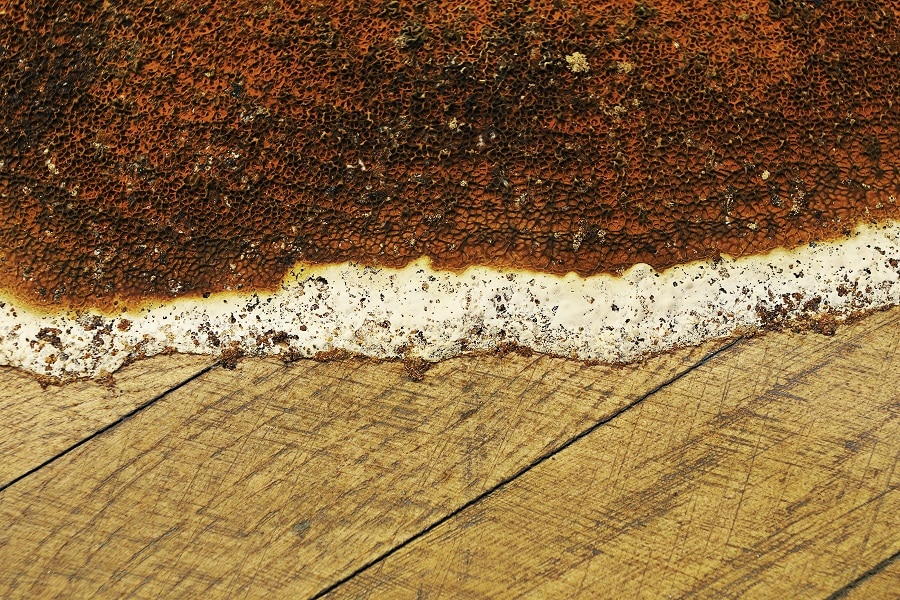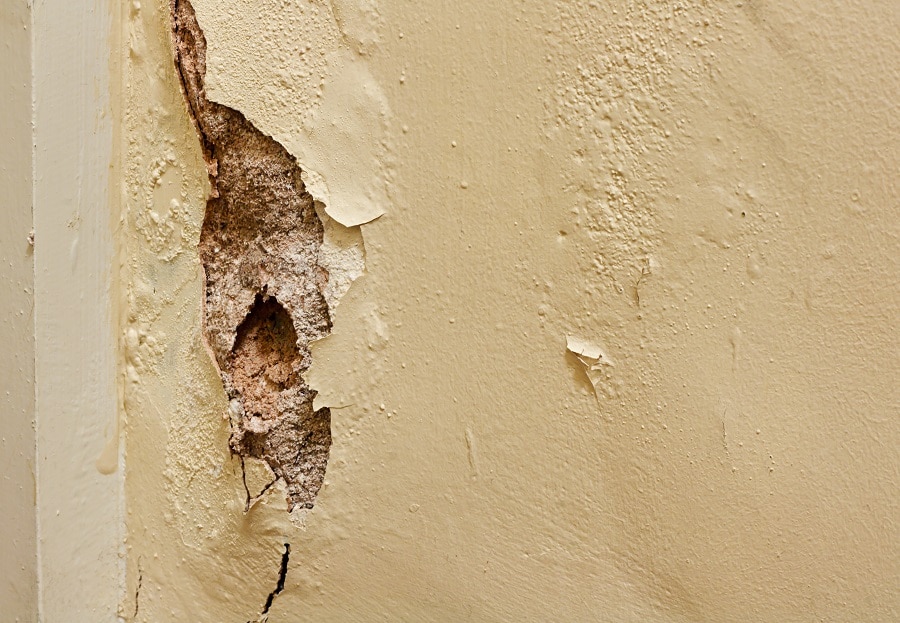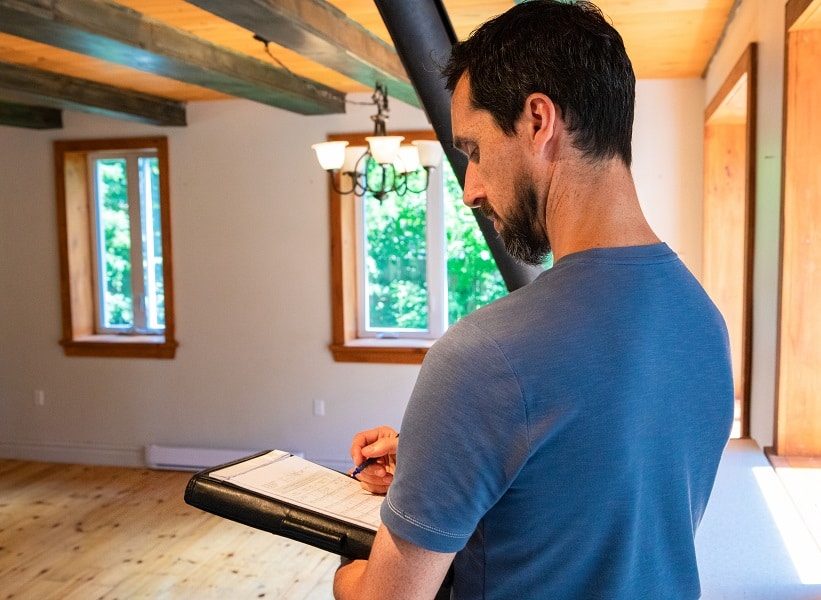What is dry rot?
Dry rot is a common term for various kinds of wood-decay fungus. Once the surface of the Wood is broken down by the Sporocarp fungi, it gives way to Mycelium that consumes the wood and dries it out effectively; the end result is a fine dust and dry rot bloom. Dry rot is caused by fungal spores which require a suitable place to land and start their colonies before spreading through the underlying wood. Dry rot spores can be present in the soil and already affected old woods.
This means wood can get damp and stay damp for considerable periods of time below 15% relative humidity. Dry Rot is much more serious than Wet Rot, and often attacks wood that appears sound, with the fungus hidden inside. It often occurs where you’re not looking. It could be under the plaster, beneath your floorboards, or even in your loft. This is why it’s essential to know the signs and symptoms of dry rot and to get it treated quickly.
Our Guarantee
- upto 30 year guarantee
- customer focused team
- 20 years combined experience
- portfolio of satified customers
- attention to detail
- Construction line accreditation
- public liability insurance
- CHAS accreditation
What is the difference between dry rot and wet rot?
Dry rot and wet rot have distinct spores/species, which means they look different. The biggest difference between wet and dry rot is the significant moisture content that wet rot needs to spread. Wet rot spreads quicker, which means it can consume more of your property much faster than dry rot. This is so because Dry Rot fungus thrives even in eco-friendly woods like bamboo and uses the capillaries within the timber to grow. Dry rot is extremely destructive and spreads quickly through a house, even retaining its ruinous effects if the room has been previously treated for damp or wet rot. Wet rot can occur on drier timber, but it generally spreads further when it becomes wet.
Call Our Sussex Damp Experts team now for quote, consultation and advice:
Call on 01273 257 765.
What are the causes of dry rot?
Dry rot is caused by different species of fungi. In Polegate, the most common is Serpula Lacrymans. If it is not managed on time, it will grow and spread throughout your home causing structural damage. This would damage the integrity of your structural wood, and thus the structural integrity of your whole residence. Dry rot hits when you have too much moisture in your timber. The fungus will use the moisture and nutrients to grow and reproduce. The term “dry rot” is used to distinguish between “dry wood rot” and “wet wood.”
Wet timber feeds on dry rot. Fungal spores require over 30% moisture to generate hyphae, which in turn can survive with 20% moisture. This hyphae can develop into a fungal body known as mycelium, which can disperse and find more wood in brick and stone. Once the rot has taken over, it weakens the wood and leaves behind a skeleton structure of the wood, removing H2O, cellulose and hemicellulose from your wood. A specialist survey will be needed, this specialist survey can help you identify the fungus that is causing your timber decay. This is really important since the cure for these damages can differ based on the actual cause.

The dangers of dry rot in Polegate
Dry Rot Effect on your Property
Dry rot spreads so fast it can possibly cause you to lose your house integrity. Dry Rot will propagate from the basement through the ground floor and the upper foundations into the roof timbers, resultantly causing the house to crumble. But a slow leak could expand over time, and in extreme circumstances, cause various parts of your home to fall. It won’t attack the mortar between your bricks or stones, but it can travel through it. Hence, regular checks are essential.
Dry Rot is a critical problem that requires urgent maintenance and treatment. You should call a dry rot expert immediately to avoid further infestation and damage. If you think you might have a problem with dry rot, get a survey from Sussex Damp Experts today.
Dry Rot Effect on Your personal health
It’s not the disease that causes dry rot that is dangerous. Yet, if the conditions in the home allow dry rot to occur, these environmental conditions can be damaging to your health. If you suffer from respiratory problems, asthma or allergies and don’t have a smoke alarm, then this guide is for you.
What are the Warning Signs of Dry Rot?
The sooner you find dry rot, the less time and money you need to waste on treating it. If you see any of the signs and symptoms listed below, a full assessment is recommended.
-
The beginning of the dry rot cycle
Spores for dry rot are carried across the wind. If they are taken to the wood, they may begin to feast on it. When the wood has enough moisture, it allows fungal spores of Armillaria mellea to germinate and create hyphae, if the timber is giving them enough nutrients to do so. The hyphae grow and join up into a lot of tangled spaghetti-like threads called mycelium. Mycelium might be light gray or solid white. The mycelium that compose these mushrooms are very powerful and can leach into porous areas like mortar, bricks and plaster to try and reach more timber.
-
Your timber is damaged.
You will see that the core of your timber has become soft and dry. Your timber may collapse as a result of this. You may observe the dry rot changing the color of your timber. Cuboidal cracking can be caused by dry rot. The pressure of water can cause timber boards to break up into shapes around 50 mm in width, a phenomenon called cuboidal cracking. The fungal deterioration will also spread further into the wood, causing hyphae the white fungal growth. Hyphae can look like cobwebs and is a common symptom of dry rot.
-
Your timber will smell.
If you smell a strong, fungal, dank and musty odour in your timber, it is likely to be affected by dry rot. This can happen even though you can’t see an epidemic of dry rot. Despite the odor, dry rot may not yet begun to grow.
-
Your timber will have fungus bodies on it.
This is the final stage of dry rot and the most noticeable. Fruiting bodies like Mushroom can start to attach themselves to your wood. They arise when dry rot can no longer feed on wood, so the fungus has to pump spores out rather.
-
Your timber will have spore dust.
Spores of the dry rot fungus don’t just occur in woods already affected by dry rot. Yet, if splotches of rusty coloured dust accompany dry rot spores, it can be indicative of dry rot. In the last step of the dry rot stage, fruiting bodies yield spore dust.
Dry Rot Treatment in Polegate

A Dry Rot infestation can only occur when moisture levels are above 20%. Monitoring the levels of moisture in your property is the first protective step to eradicating the existence of fungus. Now you will be in control of the moisture levels. We advise you to commission an expert in order to treat dry rot.
Sussex Damp Experts can help you with the removal of infected timber and any remedial work. Removing affected timber needs to be actioned by a professional. The required treatment lies on the knowledge of a dam proofing expert. Some treatments are injected into the timber, others coat the surface of the timber. Preventive treatment options are many, Such chemicals require precise concentrations and can have adverse side effects if mistakenly inhaled or injected.
A professional can determine if your timber needs Boron rods. Boron is a harmful item, therefore the protective clothing is worn by damp proofing experts. With our specialist team at damp proofing, we will be able to find any issues with dry rot and assess the extent of the issue. If left untreated, dry rot can lead to the structural failure of a wooden structure. In order to protect a wooden structure, it’s critical to treat dry rot immediately. Our Sussex Damp Experts team will work with you to implement a suitable treatment that addresses your problem effectively and efficiently. Please don’t wait until it’s too late. If you spot any signs of dry rot, call us immediately on 01273 257 765 to protect your home.
How can you prevent dry rot damage in Polegate?
The first treatment phase is the removal of dry rot. Any wooded areas of the house that traps enough water and is subject to humidity/moisture ingress can result in a dry rot infestation. Here are several techniques that will save them from forming: Always ensure there are no leaks in your property. Provide proper, sufficient ventilation.
Properly ventilate and insulate your attic. Ventilate crawl spaces correctly. Waterproof the exterior of your home by sealing the basement and crawlspace floors with our durable, waterproof sealers. Examine all areas of the roof and wall surrounding the chimney from top to bottom, ensuring that water is being directed away from the chimney properly. Keep the sinks and downs clear. Using a wet system? Check for plumbing and heating leaks in your home. The best way to reduce the risk of dry rot is to reduce moisture levels, because of the moist conditions needed for fungus to feed and germinate. If you have a leak, plugging the leak can help reduce further damage to the house.
Speak to a Dry Rot specialist in Polegate
We are a team of highly trained experts who will fix your dampness and help you to avoid future damage. We’ll do a full steam survey of the property and give you a free estimation before we start any work. Over the years, we supported the damp concerns of thousands of home Polegate owners and could even benefit you. Contact us on 01273 257 765 for a free quote and survey. A qualified Plasterboard dry rot expert will diagnose your home to determine what the extent of the infestation is This encourages us to provide unbiased guidance about the sort of care you require.

We have a complete list of expert surveyors who carry out all types of surveys and assessments, from pre-purchase surveys to full structural repairs. Dry rot is caused by moisture getting into the wood, it is important to contact us right away because dry rot can spread quickly. Email or call 01273 257 765, and Sussex Damp Experts services will be able to help you with your dry rot problem.
FAQ
Should dry rot be restored or replaced?
A certain level of dry rot can be repaired, but whether the damaged areas provide the house with structural stability, such as beams and joints, or even flooring, it is not recommended. Replace the wood in such a situation instead of repairing it. Whether you restore or rebuild the wood, it is better if you avoided the conditions that caused the rot to flourish in the first place or risked it coming back. Your roof leaks, broken gutters, or downspouts, plumbing leaks or insufficient ventilation should be inspected when considering a roof moisture accumulation You may consult a specialist to find and repair the problem.
Will you be able to treat my Dry Rot problem effectively?
With our expertly trained surveyors and specialists, a dry rot problem can be treated, rectified, and your timber can be protected for the future.
How do I discover how far Dry Rot has spread?
If you have traced the dry rot fungus quickly or not, a professional will identify the source of the problem. They will be able to trace the fungus in the different masonry and plaster from which it has spread.
How much can dry rot widen?
Dry rot spores can spread in anyplace with the right environmental settings. The reason is that they are carried in the atmosphere. If your timber has a moisture content of around 20%, and if it is in the open air, these conditions are attractive to dry rot fungus. This suggests that fungus groups can disperse to multiple materials. If dry rot is spreading across masonry and plaster, and if it reaches more timber to feed off where the timber is moist. It can widen further. Dry rot fungus needs five things to survive: the right temperature, drive rot spores, moisture, oxygen, and the food source. In any home in Brighton most of this is present.
Will dry rot stretch?
What should I do to control dry rot?
First identify the reason for your timber moist before solving it. A different treatment shall be given if the reason for your timber moisture is outside.
What are the effects of living dry rot unchecked?
Dry rot is the most insidious form of moisture that can infest property and cause permanent damage to the building if left untreated. Sometimes, once the harm is already done due to the places in which the problem is likely to be the presence of dry rot does not come to light.
Is dry rot stringent?
Dry rot can be particularly common in wooden properties, so it is essential that early signs of dry rot are identified before the damage becomes too severe.
How am I meant to know if I have dry rot?
A timber survey will assess how your timber is affected by being exposed to moisture. Later on, fruiting bodies and mycelium will be noticeable in the drive rot life-cycle.
Where can dry rot grow?
Dry rot attacks and rots timber that’s been in contact with water for a long period of time. Although it can often be mistaken for other problems in its early stages, it is important to seek advice. In every structure, both old and new, dry rot can grow. The reason being that it is caused by moisture and wetness that happen anyplace. Dry rot can be caused by leaks or weather, meaning the type of property does not affect it.




